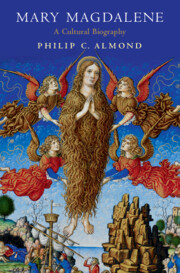6 - Mary Magdalene
Lover and Wife
Published online by Cambridge University Press: 11 November 2022
Summary
Alongside the ‘traditional’ lives of Mary Magdalene that we have been exploring in this book thus far, there is an array of ‘alternative’ lives of Mary Magdalene. These are contained within the Western ‘esoteric’ tradition.1 They are essentially attempts to make dominant the ‘true’ life of Mary Magdalene that, according to the esoteric tradition, has been obscured, even repressed, by the patriarchal church. According to the supporters of the esoteric Mary Magdalene, her ‘true’ life has been known, preserved, and transmitted by a few wise men (and some women) who often belonged to secret societies. Like the traditional lives of Mary Magdalene, these alternative lives built on the life of Mary Magdalene after the crucifixion of Jesus. But there were two crucial differences between the traditional and these alternative lives. First, Mary Magdalene was the wife or lover of Jesus. Second, Jesus and Mary had children, thus creating a ‘bloodline’ descending from Jesus and Mary to the present. The most successful of these alternative lives is undoubtedly The Da Vinci Code (2003) by Dan Brown (1964–). With over 80 million copies sold, The Da Vinci Code gave Mary Magdalene both a new life and a new afterlife in modern Western culture. It synthesized a number of earlier alternative lives and, in its turn, provided the impetus for a growing industry of alternative lives of Mary.2
- Type
- Chapter
- Information
- Mary MagdaleneA Cultural History, pp. 257 - 310Publisher: Cambridge University PressPrint publication year: 2022



